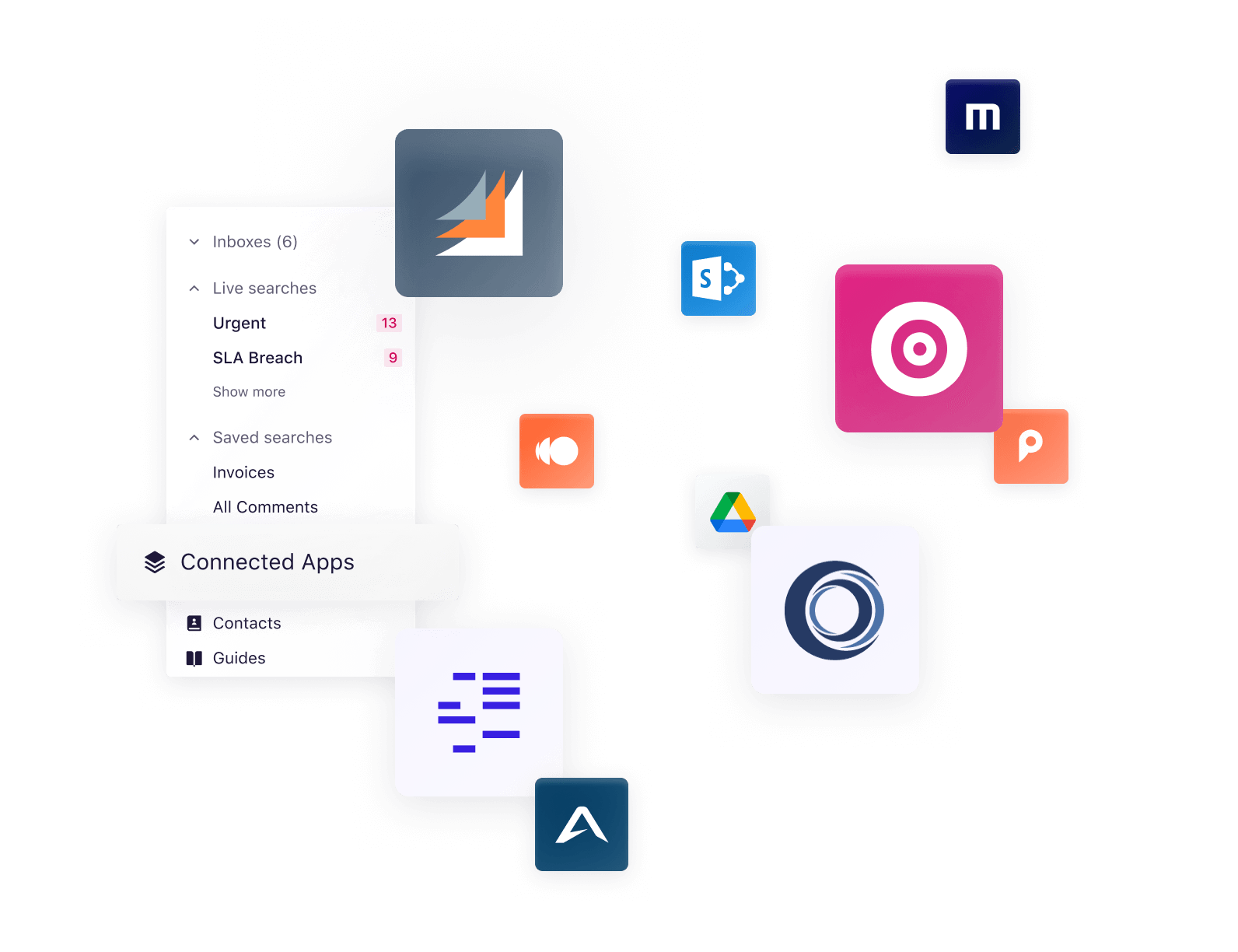The complete freight forwarding software stack
The complexities of international trade demand that freight forwarders manage shipments efficiently and navigate the challenges that disrupt supply chains. On average, delays of 27 hours affect shipments typically scheduled for a week, as Maersk reports. Freight forwarding companies may incur unexpected costs if they do not anticipate such setbacks.
That is why selecting the best freight forwarding system is essential. You should focus on tools that enhance operational efficiency, improve customer service, and ensure scalability as your business grows.
Here are 10 solutions to include in your freight forwarding software stack:
1. Enterprise resource planning (ERP) system
Integrating your ERP with your existing software stack creates a unified, data-driven view of your operations. Freight forwarders gain insights into their financials, including comprehensive accounts payable and receivable tracking. This is critical, as delays in client invoicing or mismanaged vendor payments impact cash flow.
Integrating inventory management modules from the ERP also allows for alignment between warehousing data and shipment schedules, optimising resource usage and minimising stockouts. And with HR management features, you streamline hiring, training, and payroll processes, ensuring adequate staffing for business demands.
2. Customer relationship management (CRM) system
CRM systems in freight forwarding manage customer information and track interactions from initial contact to sales and post-sale support, providing a 360-degree view of the customer journey. They provide a centralised platform to enhance customer service, streamline communication, and effectively support sales teams.
Modern CRM platforms also incorporate analytics and reporting tools, giving freight forwarders valuable insights into customer behaviour, preferences, and trends. This data informs business strategies, improves customer engagement, and enhances satisfaction and loyalty.
3. Invoice management system
Entering invoices manually, handling documents such as bills of lading, and reconciling a monthly statement from your vendor could take your accounting team a few days. Invoice management systems simplify creating, sending, and tracking invoices, reducing errors and ensuring timely payments.
Invoice management software can also use artificial intelligence (AI) to automate the process of converting paper documents into digital formats and reviewing freight invoices. Automating various aspects of the invoicing process enables businesses to improve cash flow, reduce administrative costs, and enhance relationships with clients and partners. In fact, McKinsey reports that AI-enabled supply chain management has helped early adopters reduce logistics costs by 15%.
Learn why time is an essential commodity in the shipping industry.
4. Documentation management tool
A document management system facilitates the generation, management, and secure sharing of crucial documents, such as bills of lading, customs invoices, and certificates of origin. By digitalising these documents, freight forwarders reduce the potential for human errors and ensure faster and more secure transactions.
5. Transportation management software (TMS)
A robust TMS enables freight forwarders to plan complex multimodal shipments, comparing quotes from multiple carriers across air, sea, and road freight in real time. Advanced TMS solutions offer freight consolidation, which helps optimise container usage and minimise shipping costs. Real-time information allows for the minimisation of delays and enables the proactive resolution of any issues that may arise during transit.
TMS also provides live tracking and visibility capabilities. This feature is crucial for freight forwarders and their clients, as it ensures that all parties are informed about the status of shipments. The integration of these functionalities within a TMS platform underscores its value in managing and optimising freight forwarding operations efficiently.
6. Warehouse management system (WMS)
A WMS enables you to design an optimised warehouse layout tailored to freight forwarding requirements, maximising space utilisation for handling different types of cargo. Here’s how a WMS optimises your freight forwarding operations:
- Real-time inventory tracking: Locate items quickly for loading and minimise discrepancies that lead to shipping delays.
- Order fulfilment modules: Streamline picking, packing, and shipping with tools for generating labels and managing packing lists seamlessly.
- Labour optimisation: Gain valuable insights into labour usage, allowing you to allocate resources and effectively identify areas for productivity improvement.
7. Quote and shipment management software
Dedicated quote and shipment management software offers specific features tailored to the unique needs of freight forwarders.
This software allows you to:
- Generate quotes quickly and efficiently: Leverage pre-configured templates and pricing rules to create accurate and competitive freight quotes in seconds.
- Compare rates and carriers: Easily compare quotes from various carriers in real time to identify the most cost-effective and time-efficient options.
- Handle inquiries and bookings: Streamline the process of handling client inquiries, receiving bookings, and confirming shipping details.
- Manage customs documentation: Automate the generation and processing of customs documentation, reducing errors and facilitating faster clearances.
8. AI-driven data communication platform
With the sheer volume of shipping emails exchanged daily, including quotes, cargo updates, customs documents, and invoices. This deluge of information poses a major risk: critical data can easily be overlooked or lost amidst the noise, potentially leading to costly delays and miscommunication.
A purpose-built email management platform helps you streamline communication, reducing the time spent on administrative tasks, by offering:
- Live alerts and notifications: Keep all stakeholders informed about shipment statuses, schedule changes, and other crucial information through real-time updates.
- Real-time shipment status updates: Enhance transparency and build trust with clients by providing them with immediate access to shipment details.
- Secure and electronic document sharing: Accelerate customs clearance and reduce delays by eliminating the need for physical documents.
Enhance your logistics with Sedna: Your digital freight forwarding solution
The best freight forwarding software solutions offer centralised tracking of all communications related to each message and shipment, including compliance issues and tracking details, in one unified system. This centralisation simplifies access, enhances visibility, and ensures a comprehensive audit trail for every transaction, supporting better compliance monitoring and decision-making.

Sedna's Stream enables swift, precise responses to updates and requests by linking directly to TMS insights within emails, powering your inbox with context about shipments and more.
Our email management platform centralises your communication, consolidating all relevant information into one accessible location, ensuring a clear audit trail for compliance and quick issue resolution, and boosting visibility across your operations.
Latest resources
Driving faster action and insights from your core business system
Connected Apps integrate business-critical data hidden across your digital ecosystem. Make informed decisions without needing to switch contexts or systems.






